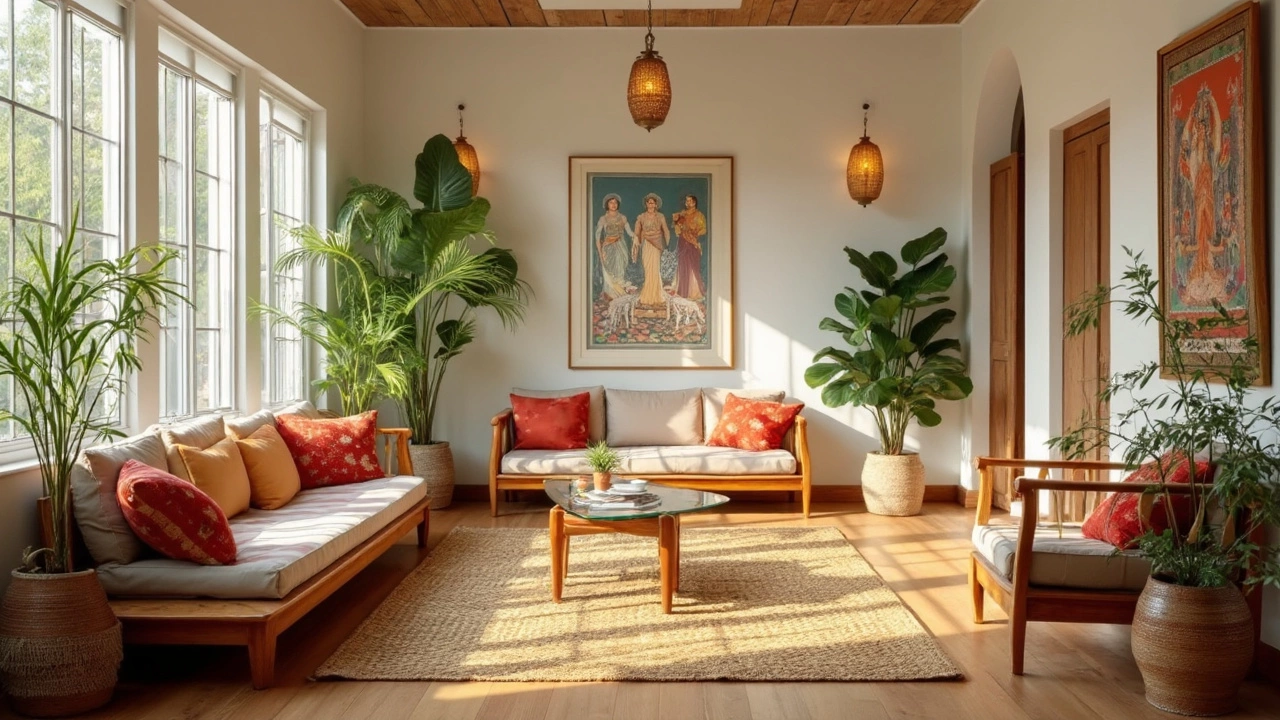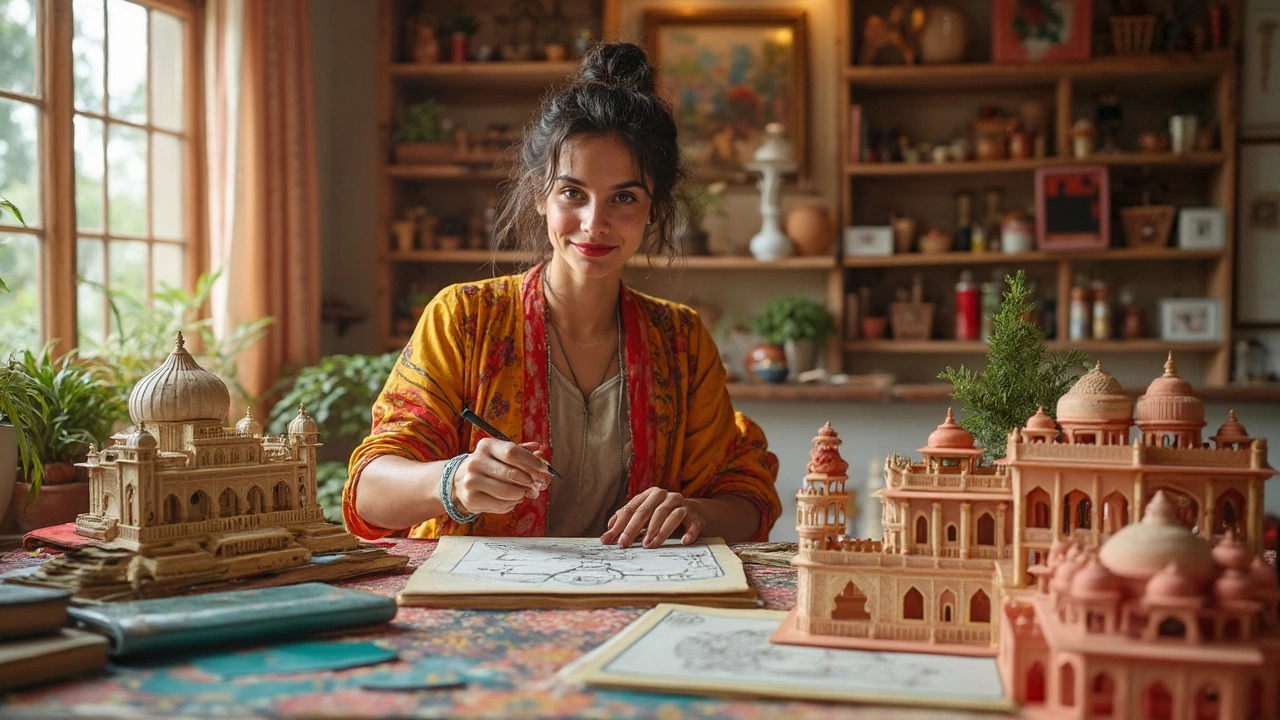Modern Blind Styles Trending in 2024
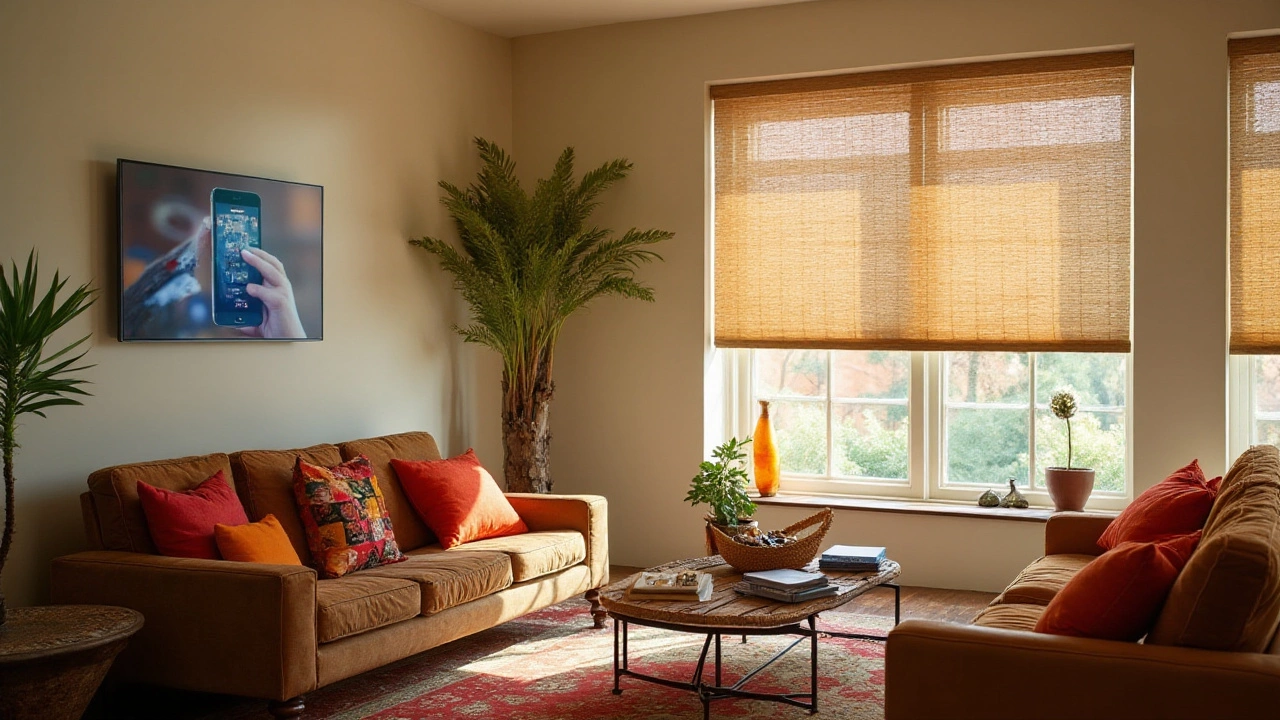
In the evolving world of interior design, window treatments have come to play a pivotal role in shaping the ambiance of our living spaces. As we step into 2024, blinds are not merely about privacy or light control; they are a statement of style and innovation. The trends this year reflect a dynamic blend of technology, sustainability, and aesthetics.
Today's blinds are a far cry from the basic models of yesteryears. Designers and manufacturers are experimenting with materials that are not only environmentally friendly but also durable and stylish. The integration of smart technology into ordinary blinds hints at a future where convenience meets cutting-edge design.
This article delves into the latest trends, offering insight into how modern homes are adapting classic elements with contemporary styles and why thoughtful customization can turn any window into a masterpiece of design. So, if you're ready to upgrade your window treatments, stay tuned as we unfold the blinds of 2024.
- Eco-Friendly Materials
- Smart Blinds Technology
- Color Trends in Blinds
- Safety and Child-Friendly Features
- Classic Meets Contemporary
- Customization and DIY Options
Eco-Friendly Materials
As the world becomes more environmentally conscious, it's no surprise that blinds made from eco-friendly materials have gained significant popularity in 2024. Homeowners and designers are increasingly opting for window treatments that not only beautify a space but also contribute to sustainability efforts. Traditional materials are being replaced by sustainable options like bamboo, jute, and organic cotton, which offer a soft, natural look while being kind to the planet. Manufacturers are embracing these materials, ensuring that they meet both practical and ecological needs.
Bamboo blinds, for instance, are not only aesthetically pleasing, offering a warm and exotic touch to rooms, but are also incredibly fast-growing, making them a renewable resource. They bring a unique texture and can filter light effectively, creating a pleasant ambiance without sacrificing privacy. Similarly, jute, known for its durability and strength, offers a rustic, earthy charm that’s perfectly at home in both contemporary and traditional interiors. Organic cotton, often used for roman shades and roller blinds, is grown without the use of harmful pesticides, reducing pollution and promoting healthier ecosystems.
In a growing trend, many window treatments from recycled materials have hit the market. Companies like Hunter Douglas are pioneering this movement by using recycled aluminum in their custom blinds. These innovative solutions not only reduce waste but also possess the stylish sheen and long-lasting quality that new materials offer. A report from the U.S. Environmental Protection Agency (EPA) highlighted that recycling aluminum saves 95% of the energy needed to produce new aluminum from raw materials. This kind of energy-saving production is crucial in ensuring our future remains sustainable.
According to a survey published by Architectural Digest, over 70% of homeowners are willing to pay more for environmentally-friendly home improvement products, a trend that reflects a growing awareness and responsibility towards environmental conservation.
"The push for sustainability in design doesn't just improve aesthetics; it's a necessary step towards preserving our planet," notes Leo Kowalski, a prominent figure in sustainable architecture.Incorporating eco-friendly window treatments into your design can thus enhance your space both visually and ethically.
In addition to their environmental impact, these materials often come with health benefits as well. They are often free from VOCs (volatile organic compounds), which are known to off-gas from synthetic materials and can contribute to indoor air pollution. Creating a home environment that promotes well-being is increasingly essential, as more people become aware of the link between indoor air quality and health. Hence, choosing blinds made from such eco-friendly and non-toxic materials can contribute to a healthier living space for you and your family.
Finally, when selecting eco-friendly blinds, considering their lifecycle is just as important as their initial purchase. Many of these materials are biodegradable or recyclable, thus when they reach the end of their use, they can be disposed of in an environmentally responsible way. By investing in eco-friendly blinds, not only are you ensuring that your space stays ahead in style, you're also making a significant contribution towards a more sustainable world.
Smart Blinds Technology
In the landscape of modern home automation, smart blinds technology stands out as a game-changer. As homes become more connected through the Internet of Things (IoT), smart blinds have emerged as an exciting front where convenience meets cutting-edge innovation. Imagine a morning where your blinds rise with the dawn to gently wake you, or an evening where your blinds close as the sun dips down, all without lifting a finger. This blend of technology and luxury is redefining how we think about privacy and energy efficiency, making smart blinds a centerpiece of modern interior design.
Smart blinds operate via an array of sensors and are fully customizable through smartphone apps or smart home systems like Alexa, Google Home, and Apple HomeKit. Homeowners relish the ability to program their blinds to specific schedules, creating the perfect ambiance at the touch of a button or even a voice command. This hands-free convenience ensures an optimized light setting throughout the day, which not only enhances comfort but can also reduce energy costs by minimizing reliance on artificial lighting.
The materials used in 2024 trends emphasize durability and modern aesthetics. Whether it's wooden slats infused with nanotechnology coatings for humidity resistance or fabrics that reflect UV rays while maintaining transparency, the tech specs of these blinds are impressive. Advanced light filtering options are now available, allowing you to adjust natural lighting to perfection while still preserving your view. Touch-sensitive panels and motion-detection capabilities add another layer of sophistication, often surprising guests with their seamless operation.
A quote from a leading interior designer, Emily Somerset, eloquently sums up the impact:
"Smart blinds not only redefine the functionality of our windows but also transform our living spaces into responsive environments that cater to our lifestyle needs."Affording an eco-friendly touch, many modern smart blinds are crafted from sustainable materials that promote a green lifestyle. Choosing these blinds demonstrates a commitment to reducing carbon footprints and protecting our environmental resources, which is a growing concern among eco-conscious homeowners.
For those contemplating the investment, here’s a statistic that might interest you: homes outfitted with smart window treatments have been recorded to achieve energy savings of up to 30%. Incorporating such technology can be both a financially and environmentally wise decision. For DIY enthusiasts and tech-savvy homeowners, retrofitting existing blinds with “smart kits” could be a fun project that not only saves money but personalizes the process.
Ultimately, smart blinds technology is becoming an integral component of the holistic smart home experience. It blends aesthetics with functionality, efficiently harmonizing with the broader system to provide comfort, security, and luxury in our everyday lives. As we navigate through the advancements of 2024, it is fascinating to watch how our once-simple window treatments are being transformed into complex systems that hint at a more intuitive and interconnected future.
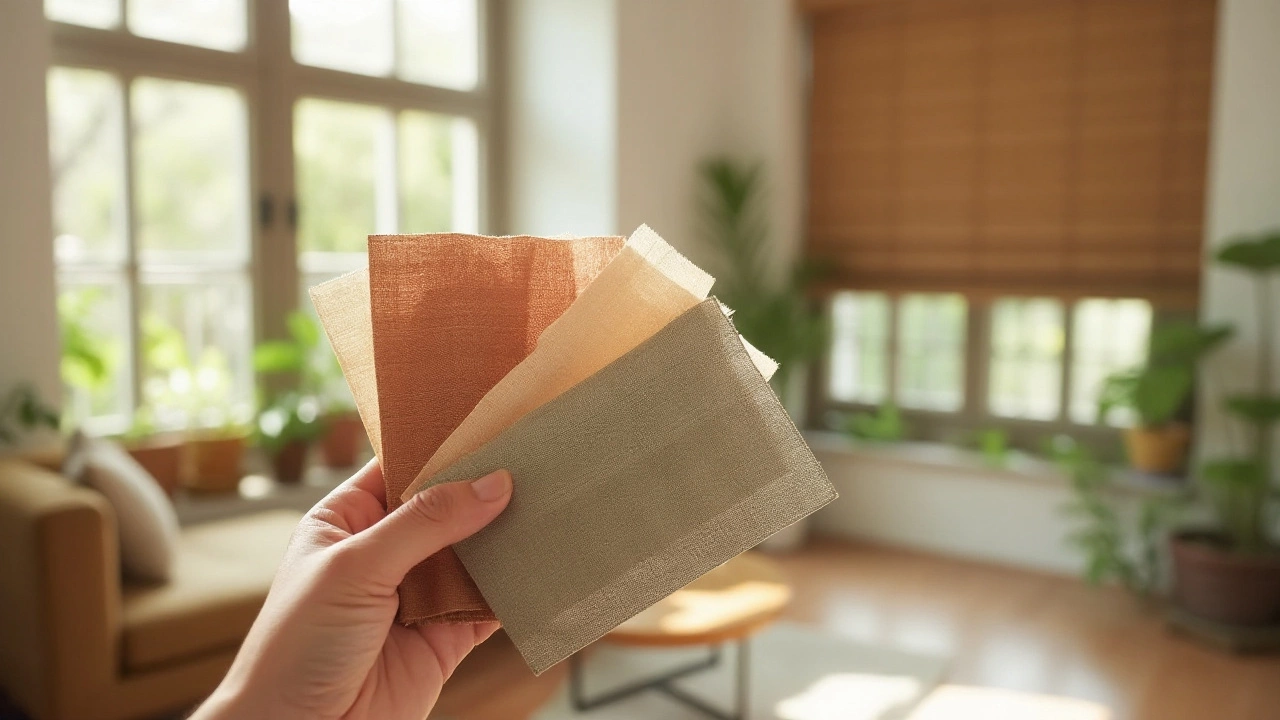
Color Trends in Blinds
As designers dive into the fabric of 2024, they find that color plays a pivotal role in the world of blinds, transcending its traditional boundaries. This year brings a refreshing palette that harmonizes the natural and the modern. Soft, earthy tones such as ochre, sage, and terracotta are dominating, creating a serene environment that literally lets the outdoors in. These hues not only provide a sense of calm but also blend seamlessly with the popular trend of nature-inspired decor. In stark contrast, vibrant accents like indigo and fiery red are used strategically to inject energy into minimalist spaces, proving that blinds are as much about style as they are about function.
As sustainability becomes an integral part of home design, many homeowners are opting for blinds made from eco-friendly materials dyed with natural pigments. This shift is not just eco-conscious but aesthetically appealing, allowing colors to maintain their brilliance without the harsh chemicals usually found in synthetic dyes. Interestingly, dual-tone blinds are making waves by offering a dynamic blend of subtlety and statement. These blinds feature a split design — one side with a neutral tone for calming evenings, and another with a bold color that awakens the morning light. It's a clever twist on customization that serves both aesthetic and functional purposes.
Technology also interlaces with color trends as smart-blinds introduce ambient lighting features that sync with chosen color schemes. Such advancements allow for endless personalization, with some models capable of adjusting hue and brightness throughout the day to mimic natural sunlight.
According to leading interior designer Erica Islas, "We are witnessing an era where blinds are no longer just a backdrop but a centerpiece that can dramatically alter the mood and character of a room."This notion is mirrored in the surge of demand for blinds that highlight or complement architectural features, effectively framing windows as art pieces.
Adding to the appeal of this year's color trends is the growing popularity of metallic finishes. While metallics have traditionally been associated with more opulent themes, their matte versions in silver, gold, and copper are gaining traction in contemporary settings. These tones act as gorgeous reflectors of light, subtly enhancing a room's ambiance without overwhelming the senses. They cleverly bridge the gap between opulence and minimalism, offering a touch of luxury that's understated yet impactful.
Safety and Child-Friendly Features
When we think about blinds, the first things that often come to mind are style, color, and how they look integrated into our interior space. But for parents, caregivers, and anyone with small children or pets, safety becomes a paramount consideration. In 2024, the advancement of safety features in window treatments is remarkable, ensuring that interior design does not come at the expense of security.
Child safety in window treatments often starts with eliminating the hazards posed by cords. Traditional blinds with cords present a significant risk of entanglement and strangulation. To combat this, many manufacturers are now producing cordless blinds or models with hidden or vastly reduced cord systems. They employ mechanisms that are out of reach for little hands, yet convenient for adults to operate. According to the U.S. Consumer Product Safety Commission, window cords continue to be one of the top five hidden hazards in the home, prompting innovations that drastically reduce their presence.
Moreover, the rise of smart blinds adds another layer of safety and ease. With these, parents can control the lighting and adjust the blinds without being in the room physically, using a smartphone app or voice-activated systems. This technological integration is not only a convenience but also a crucial feature for preventing accidents. For instance, automated settings can ensure that blinds are always open during daytime hours or closed during the hottest parts of the day to manage room temperature, reducing the risk of an overheating-related incident.
"The safety of our children is always at the forefront of our design innovations," said a spokesperson from a leading interior design firm. "Incorporating child-friendly features shouldn't mean compromising on style or functionality. Today's advancements allow us to deliver both."
In addition to technological and design innovations, educating parents on blind safety is vital. Many retailers now include safety tips with each purchase, instructing how to install and maintain blinds to keep all occupants safe. Some offer additional services where trained professionals will assess your home's windows for potential risks and provide tailored advice.
There's also been a surge in advocacy and informational campaigns encouraging the replacement of older, hazardous systems with modern, child-friendly alternatives. These initiatives are crucial in reshaping public perception, making it clear that opting for safer blinds is a necessary upgrade rather than an optional luxury. Industry leaders are voicing the importance of these considerations, making them central to new product launches and home improvement discussions. This focus has indeed placed blinds as a significant safety topic within home decor.
Consequently, apartment buildings and rental properties are also progressively shifting toward these child-safe options, understanding their responsibility to provide a safe environment for tenants. This push for universal safety standards and precautions heralds a new era where safety becomes synonymous with comfort and style, not only in private homes but across all living spaces.
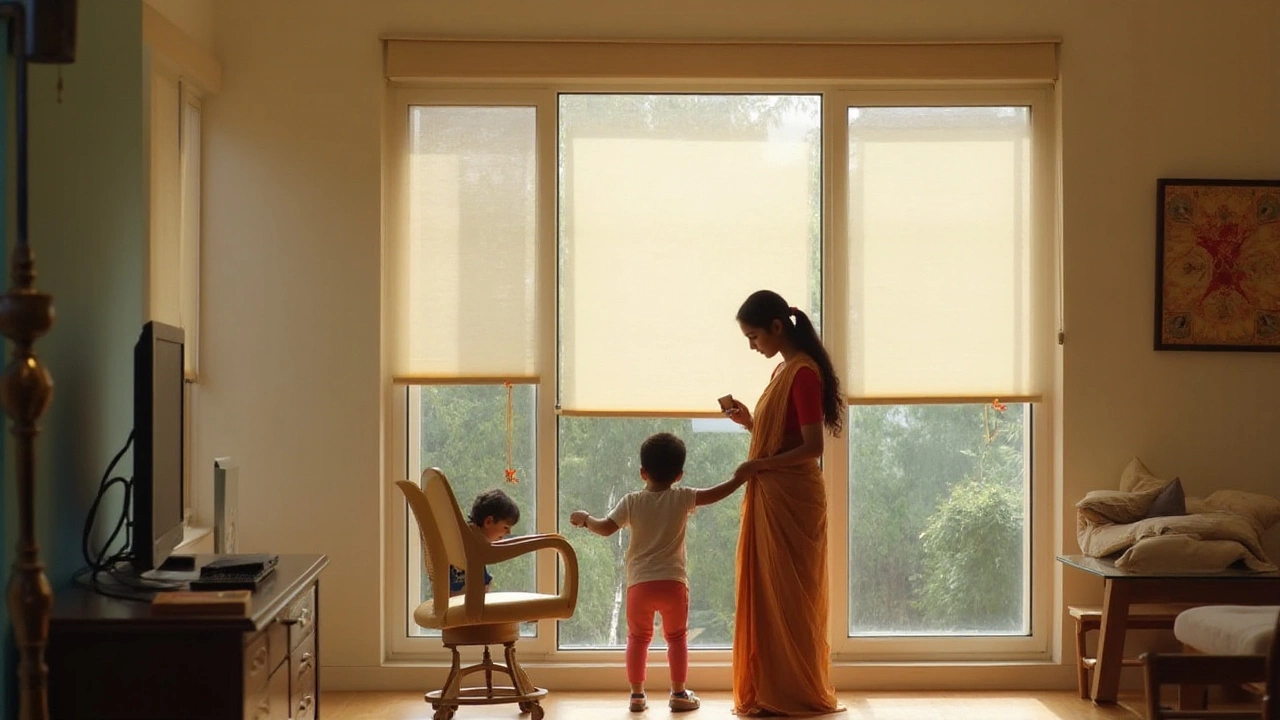
Classic Meets Contemporary
The intersection of classic design and contemporary trends is where some of the most exciting developments in interior design can be found, especially when it comes to window treatments like blinds. At first glance, these two styles might seem at odds, but when brought together thoughtfully, they create spaces that are both timeless and modern. The trick lies in blending the traditional charm of classic designs with the sleek, often minimalist aesthetics of contemporary style.
One of the fascinating aspects of this blend is the use of materials and textures that resonate with both styles. For instance, wooden blinds have always been a staple in classic interiors due to their warm, rich texture. Today, designers are incorporating sustainable woods and finishes that bring a sense of modernity without losing the charm of traditional wood. In fact, according to Home Decor Insights, the demand for these sustainable materials has increased by 20% compared to previous years, highlighting a shift towards eco-conscious design.
Another area where classic meets contemporary is in the use of color. Neutral palettes, which are a hallmark of contemporary design, pair beautifully with the often bold, warm tones found in classic styles. By selecting blinds in colors like soft greys, taupes, or even deep emeralds, homeowners can create a layered look that speaks to both past and present aesthetics. This approach not only aligns with current color trends but also allows for more versatility in interior styling.
Technology also plays a significant role in modernizing classic designs. Consider motorized blinds crafted in traditional silhouettes but equipped with cutting-edge smart technology. These hybrid creations offer the convenience of remote control and automated settings, marrying the timeless appeal of classic forms with the conveniences of the digital age. This blend is not just a trend but a testament to how technology can enhance rather than overshadow traditional beauty.
As interior designer Joanna Gaines once remarked, "Embracing the old and the new opens up a world of possibilities in design." This philosophy is at the heart of why this stylistic fusion works so well. By respecting the foundations of classic design and incorporating new-age innovations, it is possible to achieve a harmonious balance that feels fresh yet familiar.
For those keen on trying this mix in their own homes, there are plenty of ways to experiment. Start by selecting a prominent feature, such as a beautifully detailed cornice or valance, that nods to traditional elegance. Pair these with sleek, simple blinds in a soft metallic tone for a striking contrast. Don’t be afraid to layer textures and finishes, such as pairing the reflective quality of metal or glass with the organic warmth of wood. This approach ensures no element feels out of place, creating a cohesive and visually appealing design.
Whether you're drawn to the nostalgic allure of classic blinds or the innovative spirit of modern styles, combining elements from both categories allows you to customize your spaces more deeply. This timeless approach, bolstered by new advancements, ensures your window treatments will not only be stylish but also deeply functional. The fusion of classic and contemporary in blinds is not just about aesthetics but about creating a balanced living environment that respects both history and modern advancements.
Customization and DIY Options
Embracing creativity, today's homeowners are increasingly drawn towards customizing their own window treatments, finding that personalization adds a unique flair to their living spaces. The trend of DIY blinds and window treatments is not just about saving money—it’s about tailoring a solution to precisely meet the aesthetic and functional needs of their homes. Customization offers a chance to unite the evolving trends of 2024 with personal style, turning something as mundane as a window into a canvas for expression.
One of the most popular methods to give old blinds a new lease on life is through fabric wrapping. By simply selecting a vibrant or subtle fabric, it's possible to transform a standard set of blinds into something extraordinary. Homeowners can match the fabric to the room's palette or even use it to introduce a pop of color or pattern in an understated space. Perhaps you're aiming to make a bold statement with geometric designs or keep things classic with neutral linen textures. Notably, this method not only enhances the visual appeal but also improves insulation properties—perfect for those keen on merging style with function.
Incorporating technology into DIY projects opens a world of possibilities, especially with the growing integration of smart technologies in interiors. In 2024, motorized blinds are becoming more accessible, often enabling customization kits for existing window treatments. These kits usually include a small motor device compatible with popular smart home systems, allowing users to control light and privacy levels via smartphones or voice commands. This option is perfect for tech enthusiasts looking to upgrade their home while maintaining personal aesthetic control.
Interior design experts suggest that particular color schemes and patterns not only personalize space but also impact mood and room energy. Experimenting with colorful hooks or handcrafted rods adds another layer of individuality. A quotation from design maven Jane Smith captures this eloquently:
“Your home should tell the story of who you are—it should reflect your personality and taste.”Smith’s insight resonates, encouraging homeowners to view each design element as a narrative opportunity.
For beginners exploring the realms of customization, opting for adhesive decals on blinds is a low-risk initiative. These can be easily applied and removed, permitting frequent style changes without committing to permanent modifications. From playful motifs for children's rooms to sleek geometric patterns for modern kitchens, decals offer versatility. Some even choose to stencil designs directly onto blinds using paint, thereby creating bespoke artistic statements that enliven any space.
Data suggests that customized or self-made window treatments have risen in popularity, with a remarkable number of families in metropolitan areas indulging in DIY projects during home upgrades. This approach not only economizes but fosters a deeper connection between individuals and their environment, creating a home genuinely reflective of its occupants. As the trend of customization and DIY continues to flourish in 2024, the options for blinds and window treatments will only grow more diverse and imaginative, serving as a testament to personal taste and innovation.
